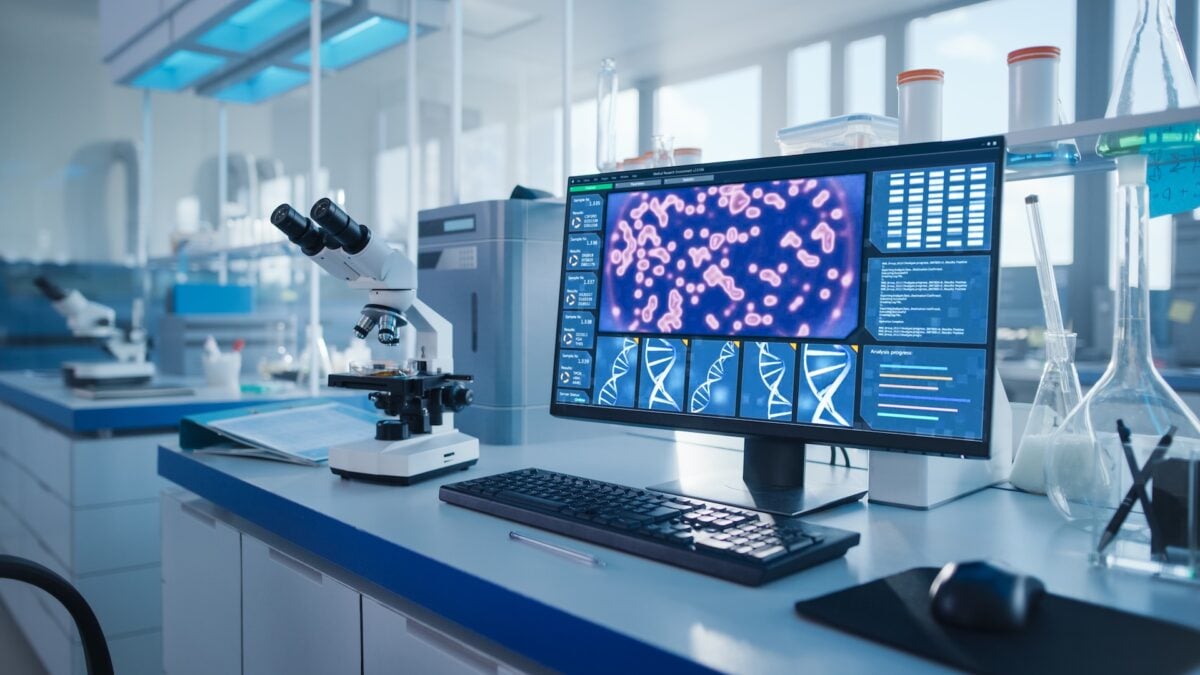AI Won’t Boost Human Productivity Just Yet, a New Paper From the Federal Reserve Says

Generative AI is not just another tech hype cycle that is bound to die down but is instead a game-changer for human productivity, according to the Federal Reserve. The big caveat, though, is the road to get there will be “inherently slow” and “fraught with risk.”
In a recent paper published by the Fed Board of Governors, researchers suggest that the hype around generative AI is probably not a bubble in the long run and that the technology will be a serious macroeconomic force, proving to have revolutionary effects for labor productivity akin to electricity and the microscope.
The idea that generative AI will make the workforce more productive isn’t a groundbreaking one. It’s been lauded by corporate executives and many AI bulls alike since OpenAI’s generative AI model ChatGPT sparked the AI craze.
But what’s significant is that the country’s most powerful economic institution has just voiced notable confidence in the technology’s potential. Albeit with a catch.
AI could be the next microscope
The paper divides technological innovations into three categories. First, you have innovations like the light bulb, which dramatically increased productivity initially by allowing workers to not be limited to daylight. But once the technology was adopted widely, the lightbulb stopped providing additional value to workplace productivity.
“In contrast, two types of technologies stand out as having longer-lived effects on productivity growth,” the researchers write, and AI has characteristics of both.
The first are “general-purpose technologies,” like the electric dynamo or the computer. The electric dynamo was the first practical electric generator, and it continued to deliver accelerating productivity growth even after widespread adoption because it spurred related innovations and continued to improve on itself.
The researchers say that generative AI is already showing signs that it fits the bill. You have specialized LLMs for specific domains like OpenAI’s LegalGPT meant to assist in legal matters, and “copilots” like Microsoft’s Copilot product, which is meant to increase office productivity by integrating generative AI into corporate workstreams. Fed researchers think even more knock-on innovations are to come, and that wave will be led by digital native companies.
And it’s evident that the core technology is rapidly innovating and will likely continue to do so as companies develop the technology with an aim to achieve artificial general intelligence. In the meantime, the paper points out, the technology’s rapid growth has already given us further innovations like agentic AI and landmark AI models like Deepseek’s R1.
The second type of technology is called “inventions of methods of invention,” the most prominent examples being the microscope or the printing press. Although a microscope has now become a common tool, it continues to raise levels of human productivity by enabling research and development projects.
Generative AI has been helpful in simulations to understand the nature of the universe, in novel drug discoveries, and more. And the paper notes that there has been a huge spike, starting in 2023, of companies citing AI within research and development contexts and in corporate earnings calls, showing that perhaps AI’s integration with corporate innovation has already begun.
There’s always a catch
Alas, this confidence comes with a caveat. AI will be a boon for economic and productivity growth, but it is unlikely to happen overnight.
The Fed’s paper says the biggest challenge with generative AI right now isn’t the tech itself: it’s getting people and businesses to actually use it. While researchers are starting to adopt it more, most companies outside of tech and the scientific fields haven’t worked it into their daily operations yet, with the exception of the finance industry. And industry surveys show that AI adoption is far higher within large firms than small ones.
So while generative AI is likely to boost how productive we are overall, the impact will be slow. That’s because it takes time, money, and other supporting tech like user interfaces, robotics, and AI agents to make AI really useful across the economy. The authors compare it to past big tech changes, like advances in computation, which accumulated for decades before causing a productivity boom.
The timeline for that boom is still unknown. Goldman Sachs economists think AI’s effects on labor productivity and GDP growth in the U.S. will start to show in 2027 and will accelerate to a peak in the 2030s.
Another risk the Fed points out comes with building infrastructure for anticipated demand. A widespread adoption of generative AI means significant need for investment in data centers and electricity generation. But investing too quickly can have “disastrous consequences” when demand doesn’t grow as expected, the Fed warns, similar to how railroad overexpansion in the 1800s led to an economic depression towards the end of the century.
Despite the caveats, the Fed is confident that generative AI will be transformative for productivity. But whether that transformation continues to accelerate perpetually and have as big of an effect as the electric dynamo or the microscope will depend on the extent and speed of the technology’s adoption.









